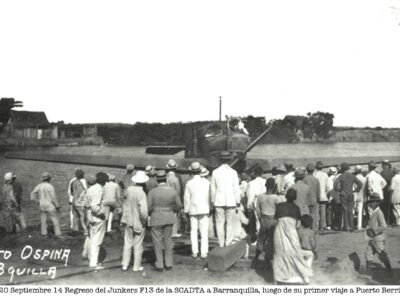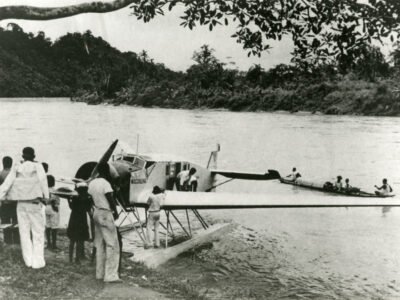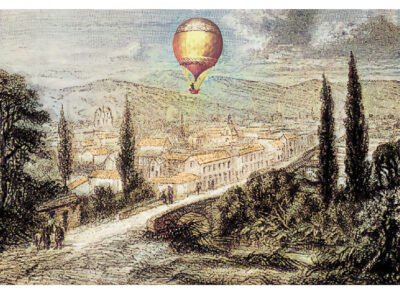The Colombo-German Air Transport Society (SCADTA) was the second airline in the world and the first airline in America. It operated under that name from 1919 to 1939. In 1940, it changed its name to Aerovías Nacionales de Colombia S.A, better known as Avianca. In 2004, the Synergy company of Colombian-Brazilian businessman Germán Efromovich acquired Avianca and changed its name to Aerovías del Continente Americano, but retained the acronym Avianca. The company continues to operate today and is recognized as one of the best airlines in Latin America.
SCADTA began as a small airline that used Junkers hydroplanes capable of landing on the Magdalena River in Colombia, mainly due to the lack of adequate landing fields at that time. The German nationality of some of SCADTA’s partners motivated the United States government to subsidize the expansion of Pan American Airways in Latin America during the administration of Herbert Hoover, and prevented SCADTA from operating flights to the United States and over the Panama Canal. However, SCADTA established a broad network of routes in the Andean region. The formation of Pan American-Grace Airways (Panagra) in the 1930s weakened SCADTA’s position in the market. Before World War II, the main shareholder, Austrian industrialist Peter Paul von Bauer, secretly sold his shares to Pan American World Airways in an attempt to protect the airline’s acquisition by Nazi Germany. On October 27, 1939, it was announced that SCADTA was merging with Saco, Servicio Aéreo Colombiano, a company that would cease operations the following day.
The history of SCADTA is an interesting one, as it marks the beginning of commercial aviation in Latin America. The company’s origins can be traced back to the efforts of a group of German engineers and entrepreneurs who saw the potential of aviation in the region. At that time, air travel was still a novelty, and the idea of using planes for transportation was met with skepticism. However, SCADTA proved the skeptics wrong, and soon became a major player in the aviation industry.
One of the challenges that SCADTA faced was the lack of infrastructure in the region. There were few airports and landing fields, and most of the land was rugged and mountainous. To overcome this, the company used hydroplanes that could land on rivers and lakes, and established a network of seaplane bases throughout the region. This allowed SCADTA to reach remote areas that were inaccessible by land, and to establish a foothold in the market.
Another challenge that SCADTA faced was competition from other airlines, such as Pan American Airways and Panagra. These companies had the advantage of being backed by large corporations, and were able to offer lower fares and better service. However, SCADTA was able to hold its own by offering a more personalized service, and by developing strong relationships with its customers.
The merger of SCADTA and Saco marked the end of an era, but also the beginning of a new one. The new company, Avianca, would go on to become one of the most successful airlines in the region, thanks to its strong commitment to customer service and innovation. Today, Avianca continues to be a major player in the Latin American aviation industry, and is recognized for its high standards of safety and quality.
In summary, SCADTA was a pioneering airline that played a key role in the development of commercial aviation in Latin America. Despite the challenges it faced, the company was able to establish itself as a major player in the industry, and laid the foundations for the success of Avianca and other airlines in the region. As such, the history of SCADTA is a testament to the resilience and innovation of the human spirit, and serves as an inspiration to those who seek to overcome obstacles and achieve their goals. The story of SCADTA is also a reminder of the importance of investment in infrastructure and technology, and of the role that transportation plays in connecting people and promoting economic development.
For those interested in aviation history, SCADTA and Avianca are fascinating topics that offer insights into the early days of commercial aviation, as well as the challenges and opportunities of the industry today. With its commitment to safety, innovation, and customer service, Avianca continues to be a leader in the field, and is well-positioned to thrive in the years to come.
In conclusion, the story of SCADTA is a remarkable one, and its legacy lives on through Avianca and the many other airlines that have followed in its footsteps. By overcoming obstacles and embracing innovation, SCADTA showed that anything is possible with vision, determination, and hard work. For those looking to learn more about the history of aviation in Latin America, SCADTA and Avianca are excellent places to start.


